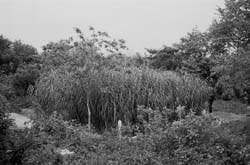In eastern Colombia, a root-zone filter removes contaminants from produced water (Fig. 1).In Colombia, Kelt Oil Co. employs a lined, reed-based, root-zone filtering system to remove contaminants from water produced with crude oil.
The roots of the reeds absorb the contaminants. The treated water is then used for agriculture.
Kelt has operated the system (Fig. 1 - above) for over 1 year near Trinidad, in the Casanare district of eastern Colombia. The Colombian company Tecnoskandia constructed the facility with technical assistance from the biotechnology research and development firm TransForm ApS-Danish Rootzone, Copenhagen.
TransForm describes the Casanare region as a prairie-like area, with numerous catchments and a high groundwater level that makes the area sensitive to contaminated water.
Tecnoskandia constructed the drain-controlled subsurface flow treatment wetland as a 2,700 sq m (0.67 acres), three-basin system with the main aim to remove phenolic compounds from the water. The system treats up to 7,500 bw/d that are discharged from production separators.
After treatment, the water is used to irrigate 7 hectares (17 acres) of rice.
Fig. 2 [20819 bytes] illustrates the treatment's effectiveness during the first 11 weeks. TransForm says that after 1 year, the system removed 90% of the phenol compounds. It expects 3 years will be required for the system to achieve full efficiency.
With a similar process, the U.S. Department of Energy is biotreating produced water at the Naval Petroleum Reserve No. 3 near Casper, Wyo. (OGJ, May 6, 1996, p. 111).
Copyright 1997 Oil & Gas Journal. All Rights Reserved.


